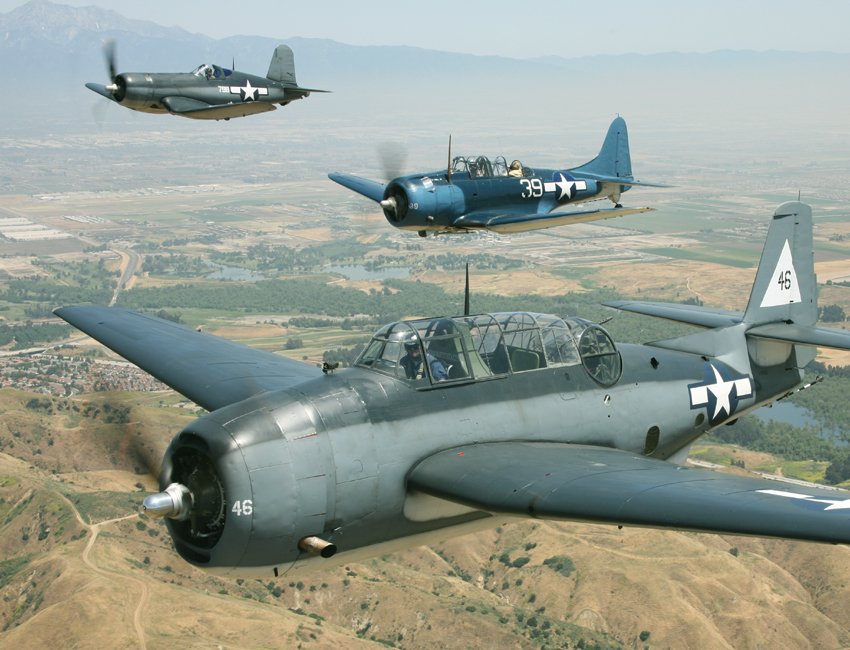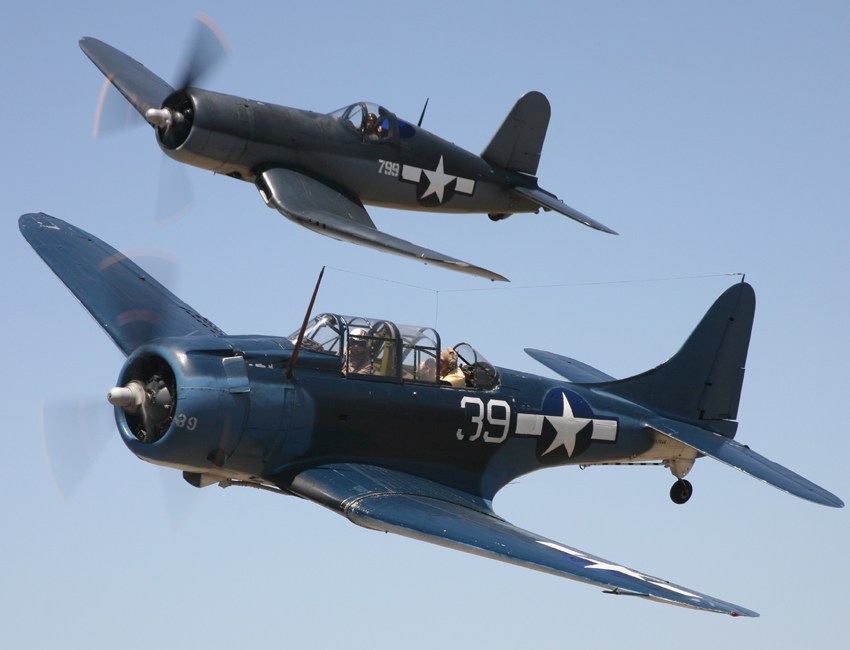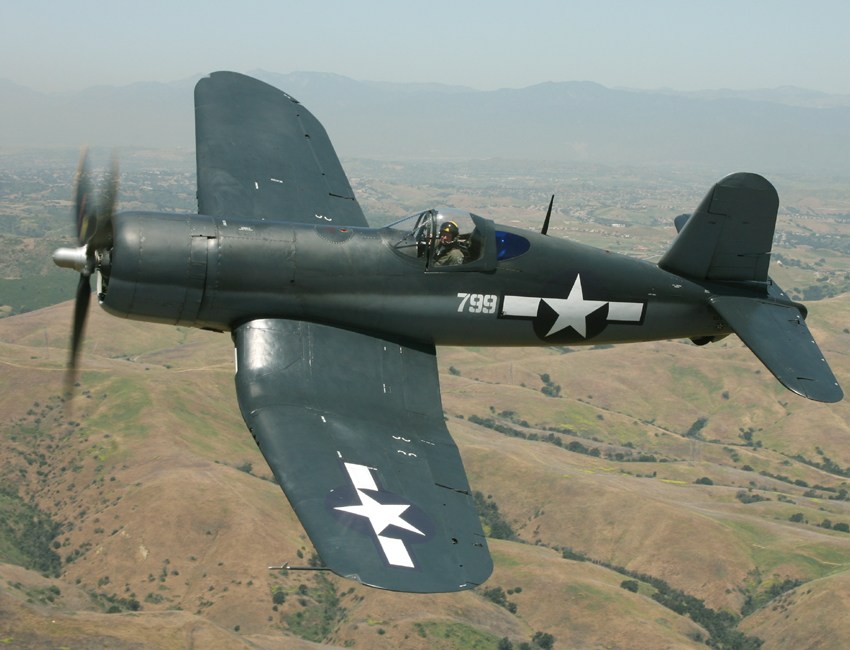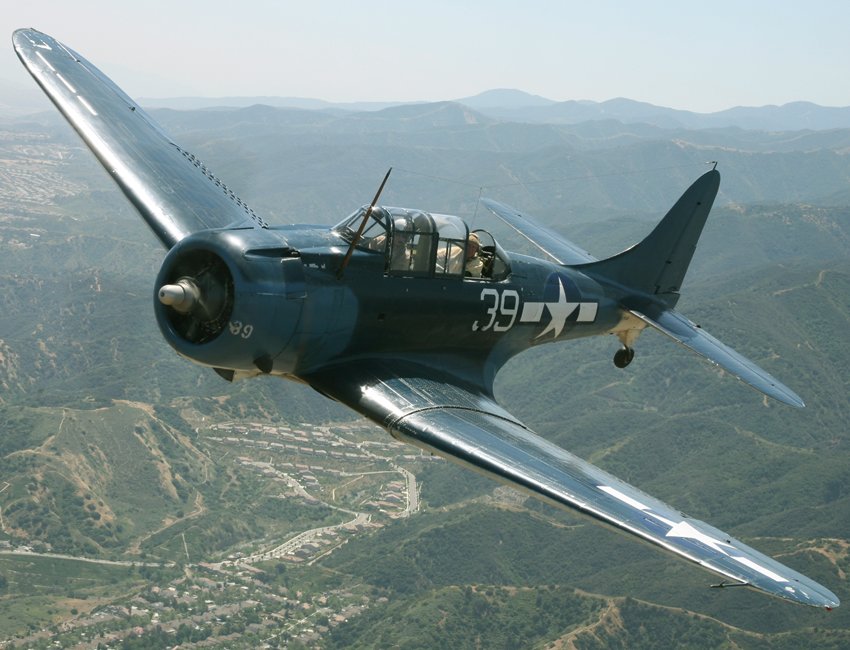Chino Airshow 2011 Preview

This year marks the Centennial of Naval Aviation in the United States, so the organizers of the Chino airshow chose this as the theme of the 2011 show. The Planes of Fame Air Museum at Chino houses one of the best collections of naval warbirds in the world, including World War Two aircraft like this TBM Avenger torpedo bomber, in front of an SBD Dauntless dive bomber and an F4U Corsair fighter. |

The show is expected to feature flights by all of these aircraft, as well as other stalwarts of the same period like an F4F Wildcat, F6F Hellcat, F7F Tigercat and F8F Bearcat. One of the great things about Chino is the chance to see rare aircraft, such as an F3F "Flying Barrel", the US Navy's last biplane fighter, a J2F Duck amphibious biplane, a PV-1 Ventura naval patrol aircraft and a PBJ, the navy version of the B-25 Mitchell bomber. |

There will be plenty of air force planes, too, including fighters like the P-38 Lightning, P-40 Warhawk, P-51 Mustang, and a rare P-63 Kingcobra, as well as bombers like the B-17 Flying Fortress and B-25 Mitchell. Another excellent feature of this show is the chance to see foreign aircraft like the British Spitfire and Firefly fighters, a Russian Yak-3 fighter, a replica German Fw 190, a replica Japanese "Val" dive bomber and the world's only authentic Zero fighter which still flies. There will also be later aircraft like the A-1 Skyraider, F-86 Sabre, MiG-15 "Fagot" and the rarely seen A-26 Invader. To cap it all off we'll have some modern firepower, in the form of an F-15E Strike Eagle.
|

The F4U Corsair was an American naval fighter which achieved an 11:1 kill ratio against Japanese aircraft, and it's another plane which also served with the Royal New Zealand Air Force. It was the first single-engined American fighter able to sustain speeds of more than 400 mph, but pilots initially had serious problems landing the plane on aircraft carriers, mostly because the length of the nose in front of the pilot obscured the landing deck on approach. The visibility problem was solved by the British, who raised the pilot's seat by 7 inches, added the curved "Malcom Hood" canopy which was later fitted to American F4Us like this one, and flew a curved approach to the aircraft carrier, which allowed the pilot to keep the deck in sight until the last moment. |

